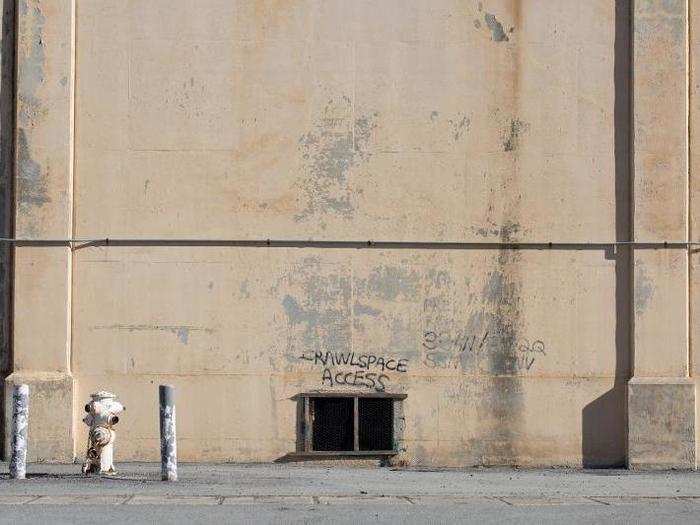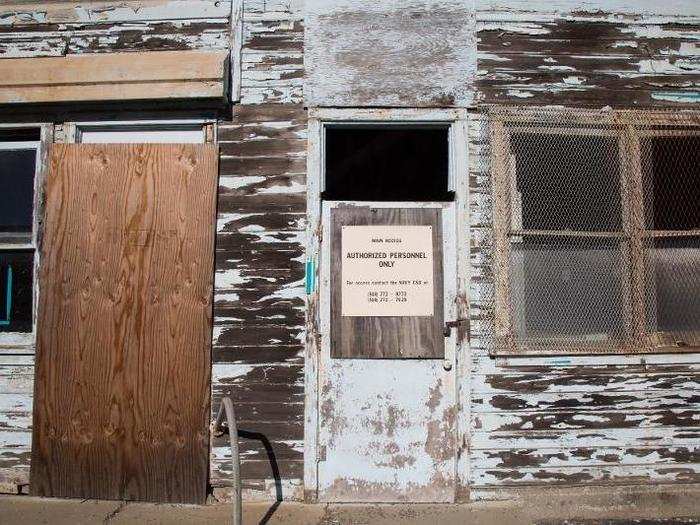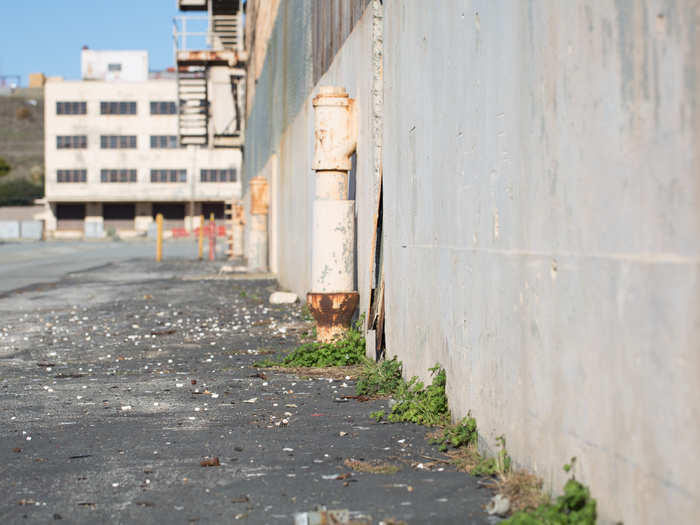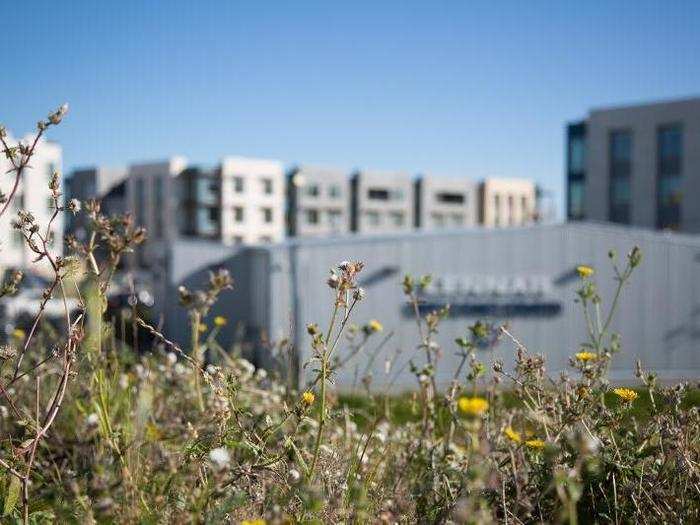San Francisco's abandoned nuclear test site reveals the dark aftermath of war - take a look inside
After the shipyard closed in 1994, the site was left abandoned for 19 years.

Buildings that once contained barracks, schools, a cafeteria, and other non-industrial facilities were emptied and left to rot. Paint now chips away like fingernail polish.

There are few reminders of what was there before, save for some signage and furniture.

Most doors have been chained closed.

Sunlight streams through broken windows.

Hunters Point was a private commercial shipyard from 1869 until the start of World War II, when the Navy bought the property. The military repaired ships and submarines there.

From 1948 to 1969, it hosted a then-secret laboratory that ran tests on ships exposed to nuclear weapons and researched the effects of radiation on animals.

James Delgado, an archaeologist who led expeditions around Hunters Point, told the San Francisco Chronicle, "It was all part of the Navy learning how to deal with the bomb."

"They would train sailors in going through the ship, simulating going through their own ship after a radioactive attack to detect radiation or to practice cleaning it," Delgado said in 2015.
At its peak, the secretive Naval Radiation Defense Laboratory employed about 100 military and 600 civilian personnel. Some of the workers didn't know what the lab did.

Source: San Francisco Chronicle
Janice M. Gale worked in the lab's library in 1948. "I had no idea there were any hazards that had anything to do with bombs. 'Radiological' to me when I was 22 seemed to have a lot more to do with radio than radiation," Gale told the Chronicle in 2015.

Gale, now in her 70s, continued: "They'd say, 'Oh, we had a spill today.' I didn't know what a spill was. Had we had health and safety measures, that would have clued me in."
At least one ship that was used as a toxic-waste dump and test lab for decontamination studies was weighed down and sunk off the coast of San Francisco in the 1950s.

Source: SF Weekly
Other military equipment that was contaminated by atomic bomb explosions was left at Hunters Point. Petroleum fuels, pesticides, and heavy metals seeped into the soil.

After the shipyard closed, it was declared a "superfund" site — a toxic-waste site designation that allows the US Environmental Protection Agency to force parties responsible to perform cleanups or reimburse the government to do the work.

That burden fell on the Navy, which has been cleaning up contamination at the shipyard for more than 20 years. But several investigations into the nature of those efforts have led to scandals.

A 2000 investigation by SF Weekly found "troubling evidence" that the Navy mishandled radioactive waste. Huge amounts of contaminated sand were reportedly dumped into the Bay. The Navy also allegedly sprinkled radioactive material on the base to practice cleanup.

Source: SF Weekly
In 2012, several employees of a government contractor that was paid to clean up the site admitted to faking soil tests by swapping samples from areas known to be highly contaminated with dirt from cleaner spots.

Source: San Francisco Chronicle
Now many soil samples are being reviewed again, causing significant delays in the transfer of land to community developer Five Point.

Source: San Francisco Chronicle
But Five Point isn't waiting for the cleanup to finish before building in the area. Construction is underway on the parcels that have passed inspection, and 234 homes have already sold.

Approximately 70 acres of the 500 total acres at Hunters Point have been cleaned up by the Navy, passed inspections by the EPA, and sold from the city of San Francisco to Five Point.
The shipyard is one of the most ambitious real-estate developments that San Francisco has ever seen. The project is expected to cost $8 billion, and it will finish in the early 2030s.

The project will cover nearly 800 acres and span about two miles at its widest points.

Five Point wants to squeeze an entire shopping district into the plan. The retail corridor will have a movie theater, a supermarket, and nearly one million square feet of retail space.
The area where the condos are was never used for industrial purposes by the Navy.

The dock is the future site of a waterfront promenade, where residents will someday enjoy live music, catch a water taxi to San Francisco's Embarcadero, or just take in the views.

The development plan gives a nod to the trendy "agrihood" — or agricultural neighborhood. Its 350 acres of green space will include a grasslands ecology park, trails, and sports fields.

Some buildings will be scrapped, while others will be restored to their industrial glory.

At Building 411, welders and boilermakers once sweat the day away in a machine shop.

Today, crows have laid claim to the building's interiors.

Architect David Adjaye, who is tasked with the redesign of the shipyard, has said he wants to leave the ironwork exposed behind panes of glass. The building is destined to become office space.

Source: San Francisco Chronicle
"This isn't about the Disney-fication of industry," Adjaye told the Chronicle. "Buildings should look the way they do because of how they are structured and how they perform."

Source: San Francisco Chronicle
But any reminders of war and its dark aftermath will be erased.

Popular Right Now
Advertisement